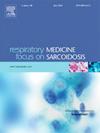Ampicillin-sulbactam versus third-generation cephalosporins in aspiration Pneumonia: A nationwide retrospective cohort study
IF 3.1
3区 医学
Q2 CARDIAC & CARDIOVASCULAR SYSTEMS
引用次数: 0
Abstract
Background
This study aims to evaluate the clinical outcomes of ampicillin-sulbactam versus third-generation cephalosporins (e.g., ceftriaxone or cefotaxime) in managing aspiration pneumonia.
Methods
We utilized the Diagnosis Procedure Combination (DPC) database, a comprehensive national inpatient database in Japan, to identify patients diagnosed with aspiration pneumonia between July 2010 and March 2022. Patients were categorized into two groups based on their treatment: those receiving ampicillin-sulbactam and those receiving third-generation cephalosporins (either ceftriaxone or cefotaxime). To mitigate confounding factors, propensity score overlap weighting analysis was employed to compare in-hospital mortality rates and the incidence of Clostridioides difficile infection between the two treatment groups.
Results
Among the 548,972 eligible patients, 424,446 received ampicillin-sulbactam, while 124,526 were treated with third-generation cephalosporins. In the third-generation cephalosporin group, 97.7 % of patients were administered ceftriaxone, and 2.3 % received cefotaxime. The mean treatment duration was 8.5 days (standard deviation [SD] 4.3) in the ampicillin-sulbactam group and 7.9 days (SD 4.1) in the third-generation cephalosporin group. Propensity score overlap weighting analysis revealed that patients treated with ampicillin-sulbactam had significantly lower in-hospital mortality (14.6 % vs. 16.4 %; risk difference [RD], −1.8 %; 95 % confidence interval [CI], −2.1 % to −1.5 %; P < 0.001) and a lower incidence of C. difficile infection (2.0 % vs. 2.8 %; RD, −0.8 %; 95 % CI, −0.9 % to −0.7 %; P < 0.001) compared to those treated with third-generation cephalosporins.
Conclusion
Our findings suggest that ampicillin-sulbactam was associated with lower in-hospital mortality and a reduced incidence of C. difficile infection compared to third-generation cephalosporins in patients with aspiration pneumonia.
氨苄青霉素-舒巴坦与第三代头孢菌素治疗吸入性肺炎:一项全国回顾性队列研究
本研究旨在评估氨苄青霉素-舒巴坦与第三代头孢菌素(如头孢曲松或头孢噻肟)治疗吸入性肺炎的临床结果。方法利用日本综合国家住院患者数据库诊断程序组合(DPC)数据库,对2010年7月至2022年3月诊断为吸入性肺炎的患者进行识别。患者根据治疗分为两组:接受氨苄西林-舒巴坦的患者和接受第三代头孢菌素(头孢曲松或头孢噻肟)的患者。为了减少混杂因素,采用倾向评分重叠加权分析比较两治疗组的住院死亡率和艰难梭菌感染发生率。结果在548,972例符合条件的患者中,424,446例接受氨苄西林-舒巴坦治疗,124,526例接受第三代头孢菌素治疗。在第三代头孢菌素组,97.7%的患者使用头孢曲松,2.3%的患者使用头孢噻肟。氨苄西林-舒巴坦组平均治疗时间为8.5天(标准差[SD] 4.3),第三代头孢菌素组平均治疗时间为7.9天(标准差[SD] 4.1)。倾向评分重叠加权分析显示,接受氨苄西林-舒巴坦治疗的患者住院死亡率显著降低(14.6% vs. 16.4%;风险差[RD],−1.8%;95%置信区间[CI],−2.1% ~−1.5%;P & lt;0.001)和较低的艰难梭菌感染发生率(2.0%对2.8%;Rd,−0.8%;95% CI,−0.9% ~−0.7%;P & lt;0.001),与使用第三代头孢菌素治疗的患者相比。结论:我们的研究结果表明,与第三代头孢菌素相比,氨苄西林-舒巴坦可降低吸入性肺炎患者的住院死亡率和艰难梭菌感染发生率。
本文章由计算机程序翻译,如有差异,请以英文原文为准。
求助全文
约1分钟内获得全文
求助全文
来源期刊

Respiratory medicine
医学-呼吸系统
CiteScore
7.50
自引率
0.00%
发文量
199
审稿时长
38 days
期刊介绍:
Respiratory Medicine is an internationally-renowned journal devoted to the rapid publication of clinically-relevant respiratory medicine research. It combines cutting-edge original research with state-of-the-art reviews dealing with all aspects of respiratory diseases and therapeutic interventions. Topics include adult and paediatric medicine, epidemiology, immunology and cell biology, physiology, occupational disorders, and the role of allergens and pollutants.
Respiratory Medicine is increasingly the journal of choice for publication of phased trial work, commenting on effectiveness, dosage and methods of action.
 求助内容:
求助内容: 应助结果提醒方式:
应助结果提醒方式:


